| Our Publications | ||
| Books by Title | ||
| Books by Author | ||
| Books by Country | ||
| E-books | ||
| About | ||
| Orchid Press E-books | ||
| Distributed E-books | ||
| Our Bookshop | ||
| About Us | ||
| Browse Shop | ||
| How to Buy | ||
| Contact Us | ||
| WE BUY BOOKS AND LIBRARIES | ||
|
||
Orchid Books
Orchid Books is a collection of well illustrated books, appealing to both the layman and the scholar, and written by specialists.| Central & North-East Asia | Burma | South Asia |
| Thailand & South-East Asia | Himalaya & Tibet | China |
Thailand & South-East Asia
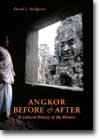 |
Angkor—Before and After: A Cultural History of the Khmers by David L. Snellgrove 2004. 264 pp., 236 col. pl., 3 figs., 10 maps, bibliography, index, 29 x 21 cm., hardcover. ISBN-10: 974-524-041-9 $60.00 ISBN-13: 978-974-524-041-4 The Khmers were first noticed by the Chinese when they began to occupy neighbouring maritime territories, Champa and Funan; their own recorded history commences with inscriptions from the fifth century onward. Having achieved some kind of federated unity, they extended their power northwards and westwards, eventually occupying almost the whole area of present-day Thailand. At every advance new temple-fortresses were built and the circumstances of their founding inscribed in Sanskrit and in Khmer. It is upon these inscriptions that the history of the Khmers up to the forteenth century is based. The Thai advance from the north was largely responsible for the rapid contraction of this Khmer ‘empire’ and consequently the cult of the great Hindu gods together with Mahâyâna Buddhism which had been favoured by the old Khmer aristocracy was replaced by the Theravâda Buddhism of Burma and Thailand. Once the most powerful people on the South-East Asian mainland, Cambodia has now become a small impoverished country, but still famous for its great monuments of the past. The result of some ten years of research, this sweeping and authoratative description of the rise and eventual fall of the Khmer empire is certain to become a standard reference work on the subject. Profuse colour illustrations, not only of the better known monuments but of many of the more obscure, yet no less interesting, sites complement the text. [Read a review from The Times Higher Education Supplement] [Read a review from The Journal of the Siam Society] |
 |
Art & Archaeology of Fu Nan Pre-Khmer Kingdom of the Lower Mekong Valley by James C. M. Khoo, editor 2003, 174 pp., 93 colour and 2 b&w plates, 9 drawings, 6 maps, bibliography, index, 29.0 x 21.0 cm., hardcover ISBN-10: 974-524-035-4 $45.00 ISBN-13: 978-974-524-035-3 While much has been published on Khmer civilization immediately preceding and during the Angkor period, the origins of this culture, deep in the Mekong Delta, remain relatively obscure. The results of initial explorations by French colonial archaeologists in the first half of the twentieth century were published in detail between 1959 and 1963 in editions which are now difficult to obtain. Interrupted by geopolitical factors until 1975, Vietnamese, Cambodian and foreign archaeologists have been active in this region since; however, aside from papers in specialized archaeological monographs, little has been published in western languages on the remarkable cultural remains that have been uncovered. The pre-Khmer culture of Fu Nan played an important role in maritime trade in southeast Asia as early as the first centuries of the Common Era. Abundant evidence exists for wide trade links within the region, with South Asia and extending as far as the Mediterranean. Chinese annals also contain tantalizing references to the kingdom of Fu Nan, now largely unknown, despite its pivotal role as the precursor and early foundation of the Khmer culture. In this book, seven authorities on this rich early civilization describe its material remains, including architecture, sculpture, metalwork, jewelry and pottery, as well as trade wares which include, among many other riches, Roman coins. This important contribution to the art history of mainland Southeast Asia will be of interest to all who have marveled at the remains of the Khmers and Angkor, and who have pondered on the origins of these rich and powerful kingdoms. [Read a review from The Journal of the Siam Society] [Read a news article on the background to this book.] |
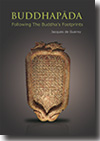 [Buy a French edition as e-book or printed version] |
Buddhapada Following The Buddha’s Footprints by Jacques de Guerny Bangkok, 2014, 25 x 18 cm., 215 pp., 131 col. plates, 9 maps, bibliography, index. ISBN 978-974-524-163-3 $35.00 E-book edition $19.99 The Buddhapada is one of the most enigmatic artistic developments that has derived from the Buddhist faith. Literally ‘foot (or feet) of the Buddha’, its most common manifestation is that of a footprint, rendered in three dimensions in stone or metal, or less commonly on cloth or paper. Often replete with complex symbolism, they serve both as a tool of instruction on the underlying concepts of Buddhism, and as a timeless reminder to the faithful of the Buddha’s presence and power. The author traces the evolution of this pinnacle of early Buddhist art from its origins in north India over two millennia ago, through its long migration in time and space, to its present prominence throughout Buddhist Asia. Documenting many fine examples along the way, the author completes this first pan-Asian survey of the Buddhapada with fascinating anecdotes of the monks, pilgrims and laymen encountered in his odyssey. |
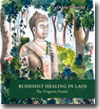 |
Buddhist Healing in Laos: The Fragrant Forest by Denise Tomecko 2009, 152 pp, 40 watercolours, 4 maps, scientific and Lao plant names, bibliography, 23 x 22 cm., softcover. ISBN-10: 974-524-078-8 $29.95 ISBN-13: 978-974-524-078-0 In this beautifully illustrated book, the author shares with the reader the age-old secrets of spiritual renewal and physical healing as administered in the Buddhist monasteries of Laos. The knowledge of the use of indigenous jungle plants to provide holistic treatments in mainland Southeast Asia is rapidly being lost, as society modernizes, adopts consumer oriented practices and embraces Western pharmaceuticals. Painstakingly recording the wisdom of an elderly Buddhist nun accumulated over a lifetime of holistic healing practice, Denise Tomecko introduces us to a wide variety of locally available plants, teas and herbs. The author details their application in sauna rooms, infusions, compresses, ointments and balms and the natural synergy of these treatments with the spiritual renewal experienced in meditation. |
 |
Buddhist Temple Life in Laos: Wat Lok Po Luang by Ilse & Birgit Schrama, with photography by Ilse Schrama First edition 2006, 128 pp., 130 col. pl., map, 17.5 x 24.5cm. Hardcover. ISBN-10: 974-524-073-7 $26.00 ISBN-13: 978-974-524-073-5 A sensitively written and beautifully presented photographic essay exploring the lives of a community of Buddhist monks and nuns, young and old, in Laos. The authors’ sincere interest was rewarded with candid comments and intimate photographs of the daily routines of these dedicated followers of the 2,500 year old Theravada tradition. The result is a unique record of some of the less obvious facets of the devotees’ lives of hardship and joy, as lived in their temple-Wat Lok Pa Luang-on the outskirts of Laos’ capital city, Vientiane. [Read translated reviews of the Dutch version of this book] [See further details about the contents of this book] |
 |
Burnished Beauty The Art of Stone in Early Southeast Asia Edited by Christopher J. Frape 2000. 162 pp., 168 colour and b & w plates, 3 maps, chronological chart. 23 x 22 cm. ISBN-10: 974-8304-89-2 Softbound: $45.00 ISBN-13: 978-974-8304-89-2 ISBN-10: 974-8304-88-4 Hardbound: $58.00 ISBN-13: 978-974-8304-88-5 Virtually nothing has been published previously on the diverse and fascinating products of the early jade-revering cultures of Southeast Asia. Most scholarly attention has been focused on ancient jades and related hardstone artefacts in China. This ground-breaking volume presents scholarly contributory essays on topics relevant to the ancient working of jade in Southeast Asia, and includes 150 colour illustrations accompanied by detailed descriptions of ancient southeast Asian lithic art drawn from public and private collections. Artefacts illustrated include material from Vietnam, Indonesia, Thailand, Burma, Laos and aboriginal Taiwan, and span a period from the Neolithic to the early years of the Common Era. The volume concludes with a comprehensive bibliography relevant to the material illustrated. [Read a review] |
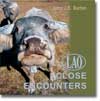 |
Lao Close Encounters by John Burton First edition Orchid Press 2005, 228 pp., profusely illustrated throughout in colour, 23 x 23 cm., softcover. ISBN-10: 974-524-075-3 $27.00 ISBN-13: 978-974-524-075-9 This is a new pictorial odyssey through Laos, with 1200 color photographs of subjects ‘closely encountered’ in all districts throughout the length and breadth of the land between 2001 and 2005, identified and indexed in an almost encyclopedic fashion. It passes through Vientiane and the familiar tourist destinations, colonial influences, the Vietnam War aftermath, daily life, agriculture and many other occupations, the pleasures and perils of travel, natural history, and each one of the country’s varied provinces. There is a rural flavor throughout, in keeping with this agrarian society. The culture and beauty of Laos are presented, while at the same time we are not spared from its problems. |
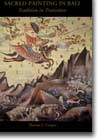 |
Sacred Painting in Bali: Tradition in Transition by Thomas L. Cooper 2005. 192 pp., 96 col. pl., 2 maps, bibliography, index, 29 x 21 cm., hardcover. ISBN-10: 974-524-034-6 $45.00 ISBN-13: 978-974-524-034-6 From the distant past to the present day traditional sacred paintings for family and village temples have been produced in many parts of Bali. Sacred painting, like Balinese temple sculpture, wayang, dance and music, is a living, vibrant folk art. Unlike Balinese commercial art, sacred paintings, once they are dedicated in a temple, are believed to possess spiritual power. Yet they are not preserved as ‘works of art’, but are regarded as craft products made for a specific purpose, and expected to wear out in time. An important new contribution on the folk art of Bali, in particular to an indigenous aspect of this art which has largely been overlooked in past. "…a tour-de-force in at least two fields: art history and ethnography… No person or library with the slightest interest in folk art, Bali or mythology should fail to take advantage of this remarkable triumphal combination of fieldwork and library research." Alan Dundes , Professor of Anthropology and Folklore, University of California, Berkeley. [Read a review from American Anthropologist] [Read a review from Anthropos] [Lesen Sie eine Rezension von Anthropos] [Read a review from the Asian Folklore Studies, Nanzan University, Nagoya] Read a review from Journal of Southeast Asian Studies] [Read a review from Journal of Folklore Research, Indiana University] |
 |
Shadows of Life Nang Talung – Thai Popular Shadow Theatre by Sven Broman 1995. 109 pp., 79 colour and 68 b & w plates. 21 x 19 cm., hardbound. ISBN-10: 974-8304-22-1 $29.00 ISBN-13: 978-974-8304-22-9 Nang talung, the Thai popular shadow theatre, originated in the southern part of the country, where it is still a very popular form of entertainment. It appeared first in the 17th century and represents a new form of Thai shadow theatre different from Nang yai, the classical shadow theatre from central Thailand. This difference is found in shape, size and composition of the shadow figures, as well as in cast, manner of manipulation, performance, music and stage. 147 shadow figures from two Thai and two Swedish collections illustrate the different characters met with in a Nang talung performance. |
 |
A Siamese Fairy Tale by W. Somerset Maugham. Illustrations by Fleur Brofos Asmussen. 2002 40 pp., numerous watercolours. 21 x 19 cm., hardbound. ISBN-10: 974-8304-26-4 $19.95 ISBN-13: 978-974-8304-26-7 A Siamese Fairy Tale was Somerset Maugham’s contribution to the library of Queen Mary’s Doll House. He, along with 199 other well-known authors of the day, wrote a contribution in their very own hand. These miniature editions were very small, about 3.5 by 3 centi-metres, and the authors must have had a hard time writing on such small pages, which were subsequently exquisitely bound in fine leathers by famous bookbinders. The tale itself was not written especially for the Doll House library. It was first published in Pearson’s Magazine of 1922, and later was to be incorporated into his book The Gentleman in the Parlour, published in 1930. It is a delightfully simple, somewhat whimsical tale of a king, a queen, nine princesses, nine parrots, one nightingale and some cats. It has a message too, as Princess September was to discover: ‘it is very difficult to put the happiness of someone you love before your own’. Danish artist and author Fleur Brofos Asmussen was so enchanted with it, that she decided to illustrate the fairy tale and write it in her own handwriting. |
 |
Urban Bangkok: Contemporary Reflections by Joakim Leroy, photographer 2010. 210 pp., 225 duotone images, map, 25 x 28 cm., hardbound with dust jacket. ISBN: 978-974-524-126-8 $40.00 THE CITY OF BANGKOK is a destination that represents many things to many people, both residents and visitors alike. To Thais, Bangkok may be the cultural and religious hub of their 70 million-strong nation, or perhaps it’s the glowing lights of opportunity for those from the country’s hinterlands, determined to better their lot. To visitors from other lands, 10 million or more annually, Bangkok may be a colourful and photogenic vacation stopover, a place to ‘let down one’s hair’ and party ‘til dawn, or an opportunity to shop, to seek renewal in its famed spas, to sample a world-renowned cuisine—or all of the above. The list of options seems endless and is never routine or dull. But Bangkok is a complex city, with multiple and often confounding facets, moreover one that seems to be in constant flux. For the foreign visitor, or even long time residents, capturing and understanding the essence of the city seems an elusive, even impossible goal. Photographer Joakim Leroy, in undertaking this daunting task, has dedicated years to produce a compelling portrait of contemporary Bangkok. Leroy distills the glittering gold of temple spires, the colourful shops and streets, the flashing neon lights of nighttime, to sometimes poignant, sometimes dramatic monochromes, and thereby approaches the very heart and soul of this great metropolis and their charming inhabitants, those ‘Thais with their notorious smiles’. Join Joakim in an unforgettable journey through the streets of this most memorable of cities—for all who have ever visited or stayed in Bangkok, or who only wish they had. |
PO Box 70, Trinity TB, NL, A0C 2S0, Canada
Telephone: +1 709-330-4703